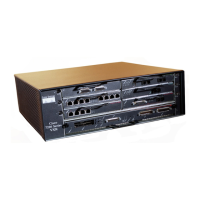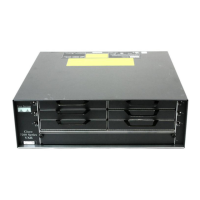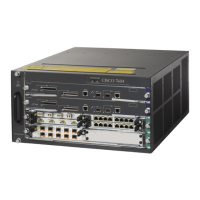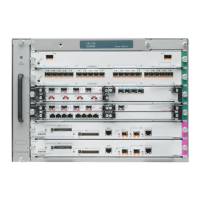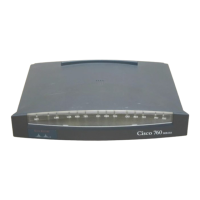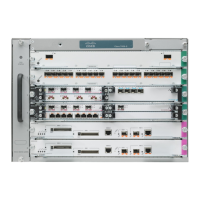1-81
Cisco uBR7200 Series Universal Broadband Router Software Configuration Guide
OL-2239-05
Chapter 1 Overview of Cisco uBR7200 Series Software
cops tcp window-size
To control the number of Address Resolution Protocol (ARP) packets that are allowable for each Service
ID (SID) on a cable interface, use the cable arp command in cable interface configuration mode. To stop
the filtering of ARP broadcasts for CMs, use the no form of this command.
cable arp filter {reply-accept number window-size | request-send number window-size}
no cable arp filter {reply-accept | request-send}
default cable arp filter {reply-accept | request-send}
Syntax Description
Cisco IOS Release 12.3(9a)BC also removes a prior caveat with HCCP Protect interfaces. Previously, in
the event of a revert-back HCCP N+1 switchover, manual removal of cable arp filter reply and
cable
arp filter request configurations may have been required afterward on Protect interfaces.
For more information about ARP Filtering, refer to the following document on Cisco.com:
• Cable ARP Filtering
http://www.cisco.com/en/US/docs/cable/cmts/feature/cblarpfl.html
cable intercept Command
Use the cable intercept command in cable interface configuration mode to allow the CMTS to forward
all traffic to and from a particular cable modem to a data collector located at particular User Datagram
Protocol (UDP) port. To deactivate this function, use the no form of this command.
cable intercept mac-address ip-address udp-port
no cable intercept mac-address
reply-accept number
window-size
Configures the cable interface to accept only the specified number of ARP
reply packets every window-size seconds for each active Service ID (SID) on
that interface. The cable interface drops ARP reply packets for a SID that
would exceed this number.
• number = (Optional) Number of ARP reply packets that is allowed for
each SID within the window time period. The allowable range is 0 to 20
packets, with a default of 4 packets. If number is 0, the cable interface
drops all ARP reply packets. If not specified, this value uses default.
• window-size = (Optional) Size of the window time period, in seconds, in
which to monitor ARP replies. The valid range is 1 to 5 seconds, with a
default of 2 seconds.
request-send number
window-size
Configures the cable interface to send only the specified number of ARP
request packets every window-size seconds for each active SID on that
interface. The cable interface drops ARP requests for a SID that would
exceed this number.
• number = (Optional) Number of ARP request packets that is allowed for
each SID within the window time period. The allowable range is 0 to 20
packets, with a default of 4 packets. If number is 0, the cable interface
does not send any ARP request packets.
• window-size = (Optional) Size of the window time period, in seconds, in
which to monitor ARP requests. The valid range is 1 to 5 seconds, with
a default of 2 seconds.
